
Constructing Tangent Circles
by
Lizzy Shaughnessy
Assignment 7
In this write-up, we will investigate properties of tangent circles, given two circles. We will consider 3 cases:
1. When the two given circles are disjoint
2. When the two given circles overlap
3. When one given circle lies completely inside the other
We will have two parts to each case. At the end of the write-up we will draw some conclusions and provide links for GSP Script Tools for these constructions.
Case 1: Two disjoint circles
Part A:
We will start with the disjoint circles AB and CD. We also have an arbitrary point E on circle AB, which will be our point of tangency on circle AB. Our goal is to construct a circle that is tangent to each of these circles at one point.
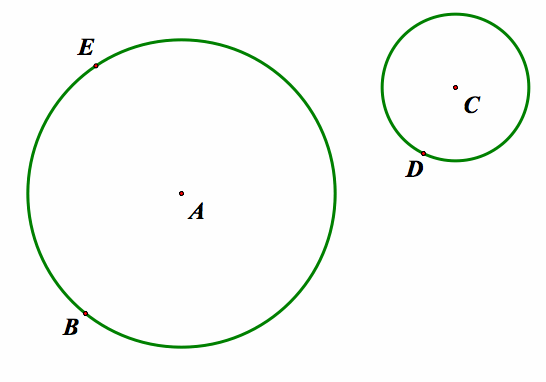
To start, we will construct a line through points A and E. Then, construct a circle centered at E with a radius length of CD. This circle intersects the line AE at two points. In this part, we will consider the point of intersection that is not inside circle AB. We will call this point of intersection point F. (We will address the point of intersection that is inside circle AB in the next part of this case.)
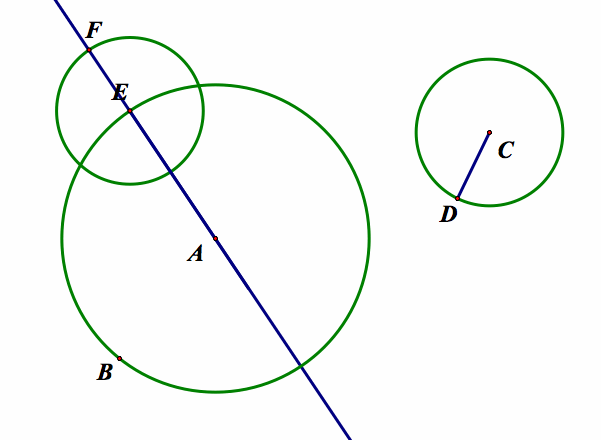
Next, we will construct segment CF and the perpendicular bisector of CF (using the midpoint, G). The perpendicular bisector will intersect line AE at one point. We will call the intersection point H.
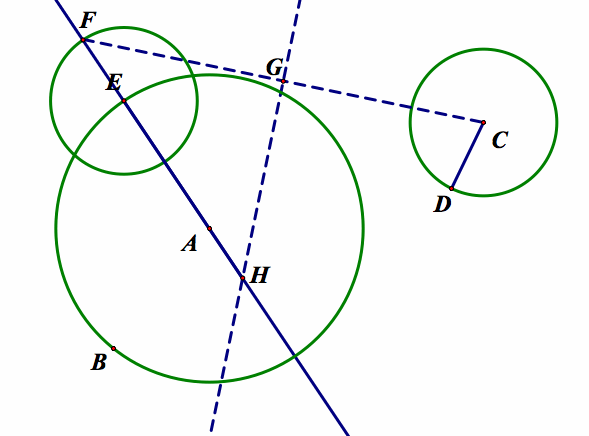
By properties of perpendicular bisectors, we know that segment FH is congruent to segment CH. Segment CH and circle CD intersect at a point, call it K. We constructed the circle centered at E to have a radius of length CD so CD is congruent to EF. Therefore, KC is also congruent to EF. So we have the following equations:
HC-KC = HK and HF-EF= HE
But we know HF = HC and EF = KC
so HK=HE.
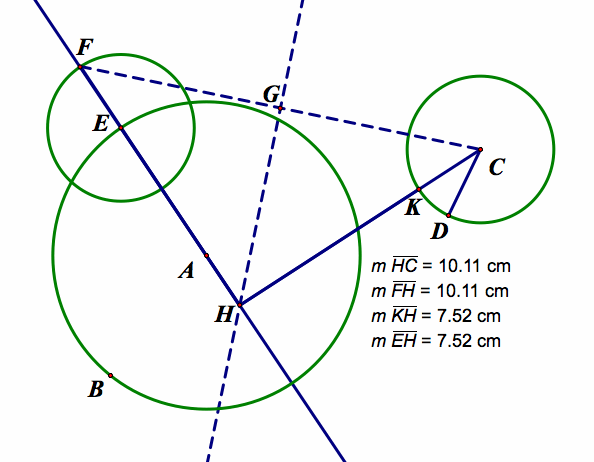
Because HK is congruent to HE, a circle centered at H with a radius of HE will also pass through HK.
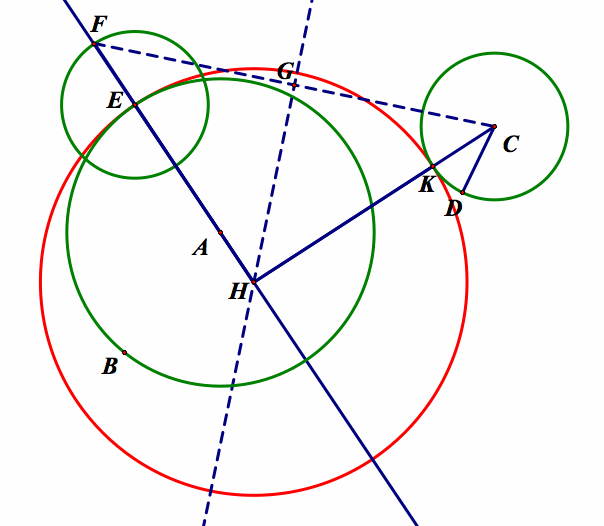
The constructed red circle passes is tangent to each of our original circles (circles AB and CD) at exactly one point. Here is a more clear picture of this tangent circle.
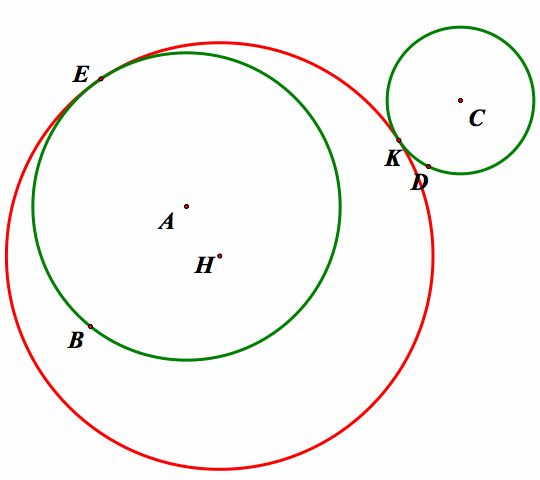
Part B:
As we mentioned before, line AE intersected the circle centered at E at two points. In part A, we looked at the point of intersection that was outside of the circle AB. In this part, we will use the point of intersection inside the circle AB. We will call this point of intersection point F.

As in part A, we will construct segment CF and it's perpendicular bisector. Point H will be the intersection of the perpendicular bisector and line AE.
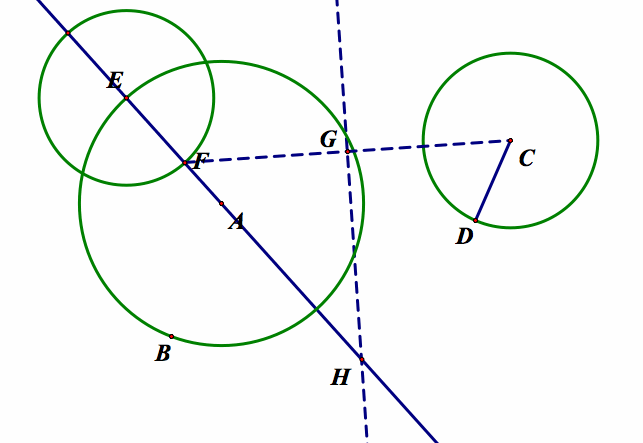
Constructing line HC, we see the line intersects circle CD. Point K will be the outer point of intersection.
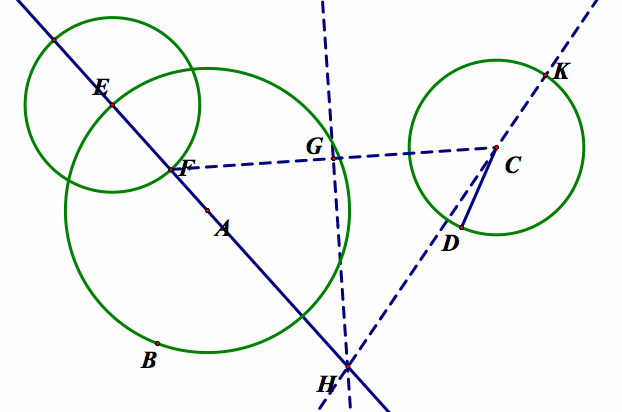
Using similar relationships we used in part A, we know that HK and HE are congruent. So if we construct a circle HE, it will also pass through point K.
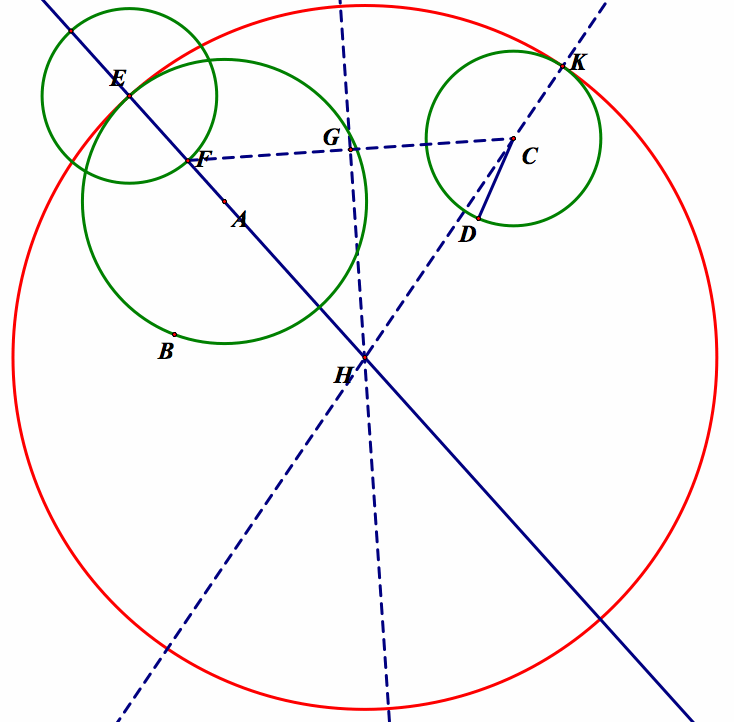
So we have constructed a circle that is tangent to our two original points at exactly one point. Here is a more clear picture of this tangent circle.
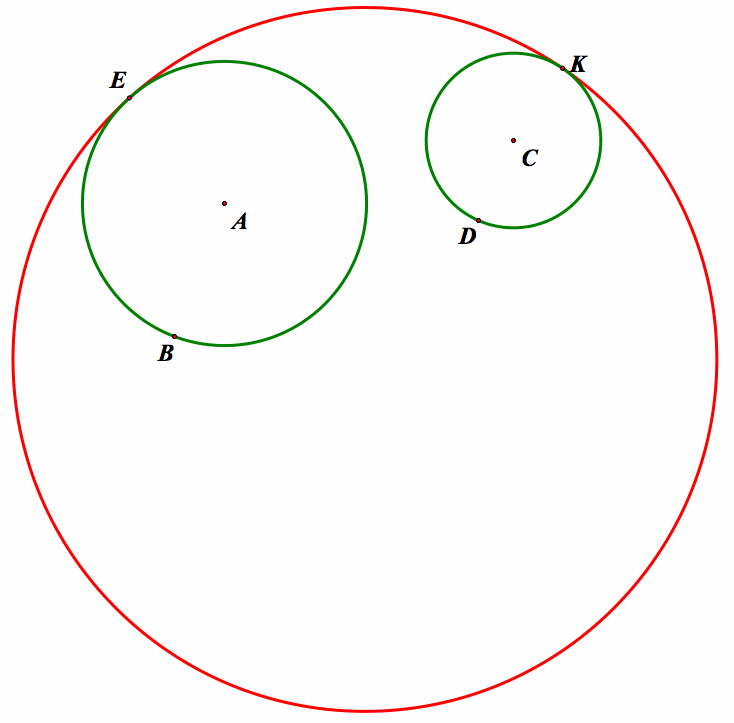
Case 2: Circles Overlap
Part A:
In this case, we will start with two circles that over lap. As in case 1, we will call these circles circle AB and circle CD. We will have an arbitrary point on circle AB called point E. Construct line AE and point F, the intersection of line AE and the circle centered at E. As with case 1, we will start with the intersection on the outside of circle AB.

We will use the same steps we used in case 1 to construct the tangent circle. To start, construct segment CF and the perpendicular bisector of CF. The intersection of the perpendicular bisector and line AE will be called point H. Now construct line HC and the intersection of line HC and circle CD, call this point K. We know HF is congruent to HC so EH is congruent HK. So the circle centered at H with a radius of HE will also intersect point K. This circle is our desired tangent circle (shown in red).
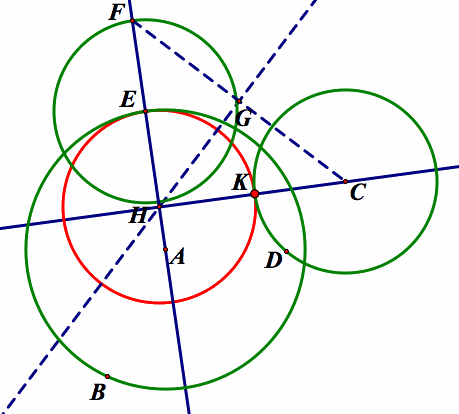
Here is a more clear picture of this tangent circle.
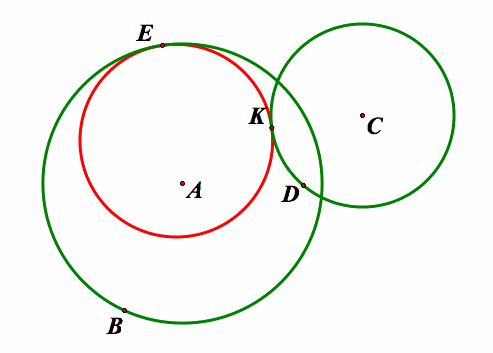
Part B:
For this part of case 2, we will use the point of intersection between line AE and circle AB that is inside of circle AB. The construct is the same process we have done already so we will not go through each of the steps. The following is a snap shot of the construction with all of the necessary pieces. The tangent circle is shown in red.
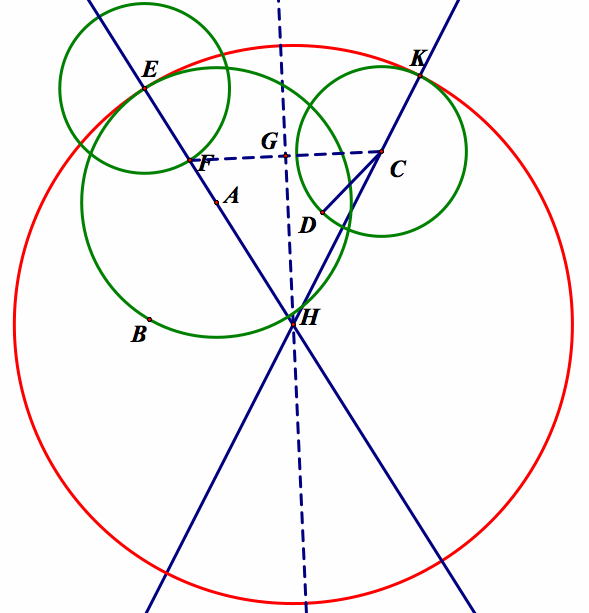
Here is a more clear picture of the tangent circle.
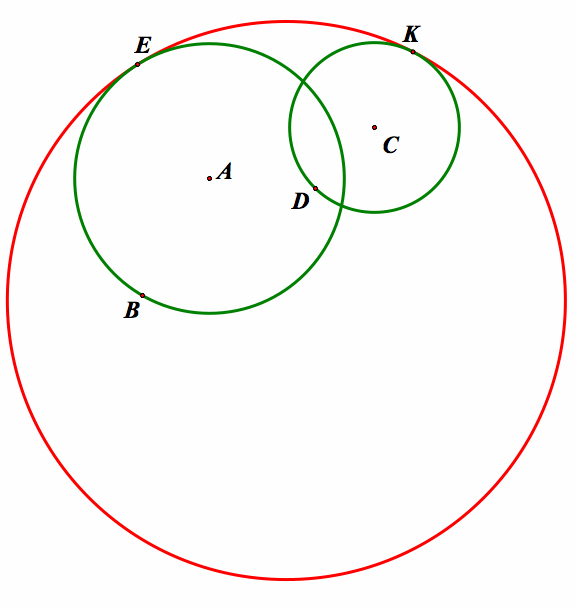
Case 3: One Circle Inside the Other
Case A:
In this case we will start with circle CD completely inside of circle AB and an arbitrary point E on circle AB. Our point of intersection between line AE and the circle centered at E will be outside of circle AB.
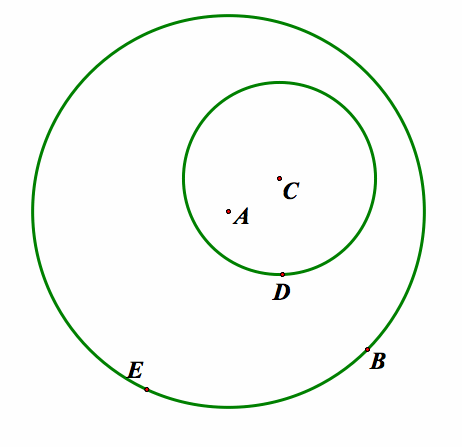
The construction is the same process we have used throughout this assignment. The following is a snap shot of the construction and all the necessary pieces. The tangent circle is found in red.
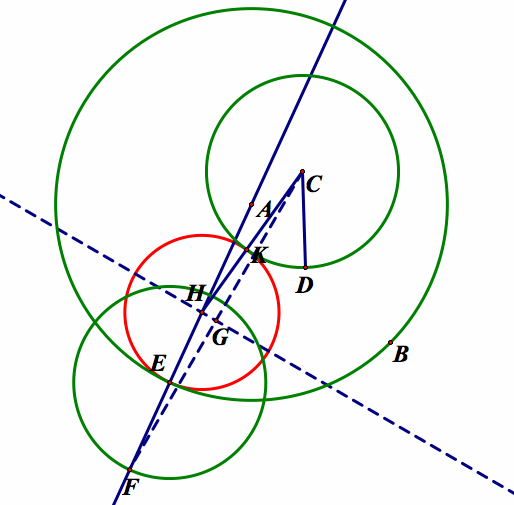
Here is a more clear picture of the tangent circle.

Case B:
Here is the construction if the intersection of the circle centered at E and line AE is inside of circle AB. The tangent circle is shown in red.
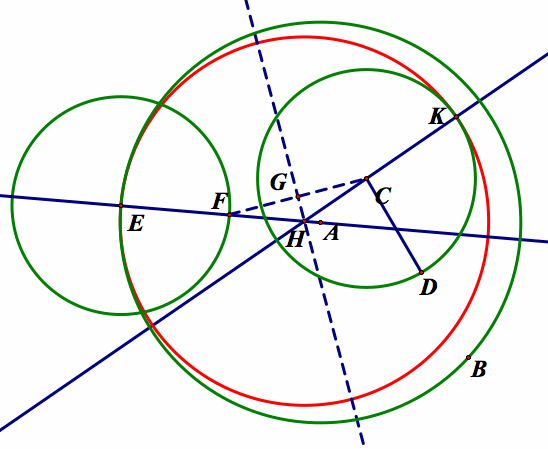
Here is a more clear picture of the tangent circle.
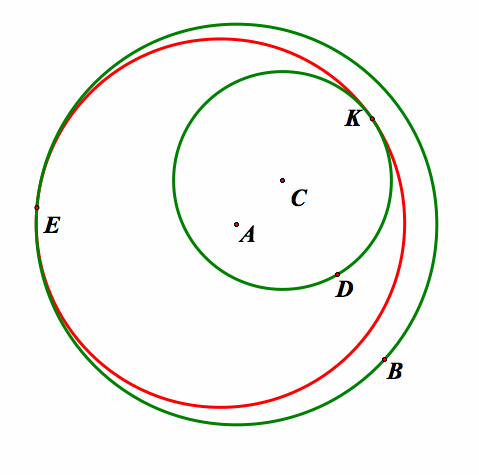
Conclusions
In Case 1A, we found that the tangent circle completely contained circle AB and was outside of circle CD.
In Case 1B, we found that the tangent circle completely contained both circles AB and CD.
In Case 2A, we found that the tangent circle was completely contained in circle AB but was outside of circle CD.
In Case 2B, we found that the tangent circle completely contained both circle AB and CD.
In Case 3A, we found that the tangent circle was completely contained in circle AB but was outside of circle CD.
In Case 3B, we found that the tangent circle was completely contained in circle AB but circle CD was contained in the tangent circle.
Overall, the results of Case 1A and Case 2A are the same. The results of Case 1B and Case 2B are the same. The results of Case 3A and Case 3B are unique.
GSP Script Tools
Case 1A
Case 1B
Case 2A
Case 2B
Case 3A
Case 3B
Return Home





















